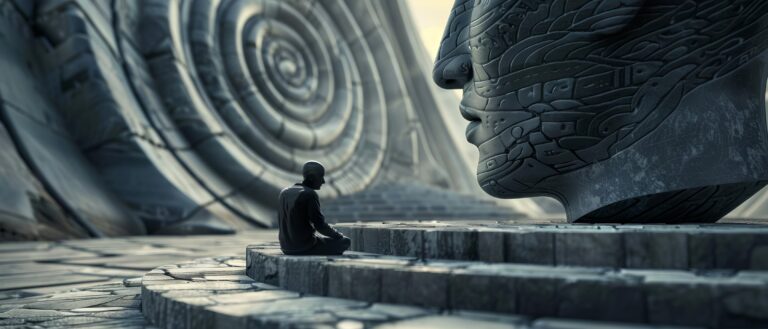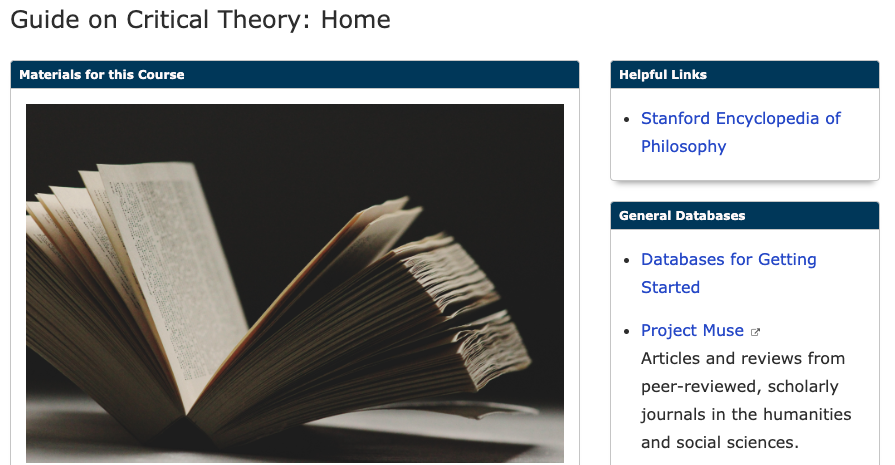Critical Theory
What Is Critical Theory?
This chapter explores the fundamental principles of critical theory and how to read theoretical texts. Critical theory refers to systemic ways to think about arts and culture. For example, critical theory has the power to unmask unspoken assumptions behind social oppression. It reveals the ideologies that are used to justify the oppression. It thus contributes to our collective pursuit of social justice and liberation.
Critical theory emerged in the West as part of philosophical interpretations of important topics in history, culture, politics, and the arts. Critics of various philosophical persuasions approach texts, such as Macbeth, and social problems, such as racism, with coherent sets of principles.

Examples of critical theory are psychoanalysis, Marxism, feminism, post-colonialism, and critical race theory. Further, critics practicing particular theories tend to examine the texts and their problems IN RELATION TO particular topics, such as economic conditions, political movements, psychology, gender dynamics, historical events, and the instability of language. With these critical tools, the theorists often excavate layers of unspoken meanings underneath what is explicitly stated in a text.
Take, for example, the concept of instability of language which we just mentioned. According to the Algerian-born French philosopher Jaques Derrida, language is inherently unstable and is vulnerable to biases. The meanings of a word are dependent on other concepts and experiences. The word in and by itself has no fixed meaning.
Someone might associate the word cat with the image of a cute, furry creature with pointy ears and whiskers, while another person might associate it with an allergy-inducing animal with sharp claws and evil eyes. Their individual experiences with cats have led to this difference in perception.
Similarly, the word black may commonly be defined as not white. But the meaning of black can also emerge against a range of other colors and objects such as yellow, blue, green, cat, coffee, and so on. The meaning of black is dependent on an infinite web of other meanings.
Therefore, we should be skeptical of binary notions and try to take them apart in order to examine each element. We can better understand the meanings of a work within its larger social context.
The rise of one theory often leads to, or influences, the development of another theory.
For example, in the late nineteenth century, Karl Marx laid the groundwork for a political philosophy that highlights class differences and how economic conditions change human behaviors. Marx’s theory about capitalist economic relations provided new tools for later critics to examine class tensions and power structures.
French critic Michel Foucault draws on Marxism to argue that “knowledge is power” in the sense that the production of knowledge is a form of social control through social institutions such as religion, healthcare, family structure, and cultural traditions.
Here is another example. Sigmund Freud developed psychoanalytical methods in the early twentieth century, which led to a new understanding of the psychology of authors, readers, and the texts they engage with. Psychoanalysis focuses on suppressed and often-unacknowledged mental images of the world. This theory of repression feeds into feminism’s critique of the society’s subjugation of women.
Case Studies
The same work of art can have several different, even conflicting, interpretations through different theories.
One may interpret, as Freud does, Oedipus the King as an expression of the incest taboo [full text provided by PBS]. Freud coined the term Oedipus complex based on his interpretation of this Greek tragedy. The same tragedy can also be read through a Marxist lens as an allegory for class struggles between the bourgeoisie and the proletariat. The tragedy thus expresses the political unconscious of the society.
Another example is Kate Chopin’s 1893 short story, “Désirée’s Baby” [full text here]. An adopted child with unknown parentage, Désirée grows up to marry Armand. Their baby, as it turns out, is part black, which is seen as scandalous in antebellum Louisiana. Infuriated and assuming that Désirée is the culprit, Armand sends his wife and the baby away, going so far as to burn the cradle. It is revealed later that, in fact, Armand is the one who is part black.
The moral of the story may seem ambiguous.
We may ask: is this instance driven by Armand’s refusal to recognize his own racial identity, or the fear of being othered—hence his need to cast Désirée as the deceiver?
We can examine this story from feminist perspectives with a focus on the fate of Désirée. We can also interpret the story through critical race theory to discover racialized fears of otherness.
In summary, critical theory entails a structure of ideas that enables criticism to shed a new light on culture, arts, and literature. We have also looked at how critical theory serves as a powerful tool in unmasking unspoken assumptions behind social oppression.
As we conclude this session, let me leave you with one final thought.
If the arts are a diamond, critical theory is the light we project from different angles to make the diamond glow.
Your Turn
It is now your turn to apply critical theory to the analysis of a cultural phenomenon or a work of art. In this exercise, please watch the following clip twice. This is the “Trinity Test” scene in Christopher Nolan’s Oppenheimer (2023), an impactful sequence in the biopic. Trinity was the code name of the first detonation of a nuclear weapon, conducted by the United States Army on July 16, 1945, as part of the Manhattan Project.
Watch it at least twice to note plot elements as well as cinematic elements. Write down, first of all, noteworthy elements. Then, develop a theory of your own to interpret this scene.
Your theory, as we noted above, will not be all-encompassing. It needs to have a thematic focus. You will identify a topic of interest and delve deeper into it, such as the ethics of science, society’s well-being, universal or relative morality, and so on.
This is a suspenseful scene with a lot of anticipation as scientists prepare for the ultimate test. As Oppenheimer and his team countdown to detonation, the camera takes turns to focus on each individual and their preparation, focusing repeatedly on the big red button and the trembling finger next to it. When the bomb explodes, the non-diegetic musical soundtrack as well as ambient noise fade out. It is complete silence. How does the sequence convey the gravity and enormity of this moment?
Not many words are said. All the lines are pragmatic. No philosophizing. However, the scene conveys a great deal of information visually. What is your theory about what the scene is trying to say about human enterprises, religion, and scientific innovation?
Quotable Quotes
Here are some examples, in the form of “quotable quotes,” that showcase how critics work and what critical theory is. These quotes come from a variety of disciplines, but they share a conviction in tackling “big” questions through specific lenses.
A computer would deserve to be called intelligent if it could deceive a human into believing that it was human.
— Alan Turing (1950)
The structure of language determines not only thought, but reality itself.
— Noam Chomsky (1986)
Knowledge is power.
— Francis Bacon (1597)
Poetry is truer than history. (Poetry presents general truths, while history presents particular facts.)
— Aristotle (330 BCE)
No one needs to represent all Black experience in order to track, expose and oppose systemic racism.
— Judith Butler (2021)
People know why they do what they do; but they don’t know what their action does.
— Michel Foucault (1961)
Gender studies does not deny sex; it asks how sex is established, through what medical and legal frameworks.
— Judith Butler (2021)
Artifice is at the very heart of reality. We live in a world where there is more and more information, and less and less meaning.
— Jean Baudrillard, Simulacra and Simulation (1981)
Intersectionality is a way of thinking about identity and its invisible relationship to power.
— Kimberlé Crenshaw (1989)
Injustice anywhere is a threat to justice everywhere.
— Martin Luther King, Jr. (1963)
The very serious function of racism is distraction. It keeps you explaining, over and over again, your reason for being.
— Toni Morrison (1975)
Movies do not just mirror the culture of any given time; they also create it.
— bell hooks (2012)
Next Steps
Having done this exercise, now take a look at the chapter on Critical Writing to explore how to analyze a scene and how to write a film analysis.
You can also take your observations about the film clip above and formulate your own research questions. Learn how to ask effective, open-ended research questions in the chapter on Research Questions.
To learn more about critical theory, take advantage of Professor Joubin’s Guide to Critical Theory at the George Washington University Gelman Library.
Further Reading
Some of these readings can only be accessed using George Washington University credentials.
McCaw, “Reading Critical Theory,” How to Read Texts, 2nd edition (Bloomsbury, 2013).

